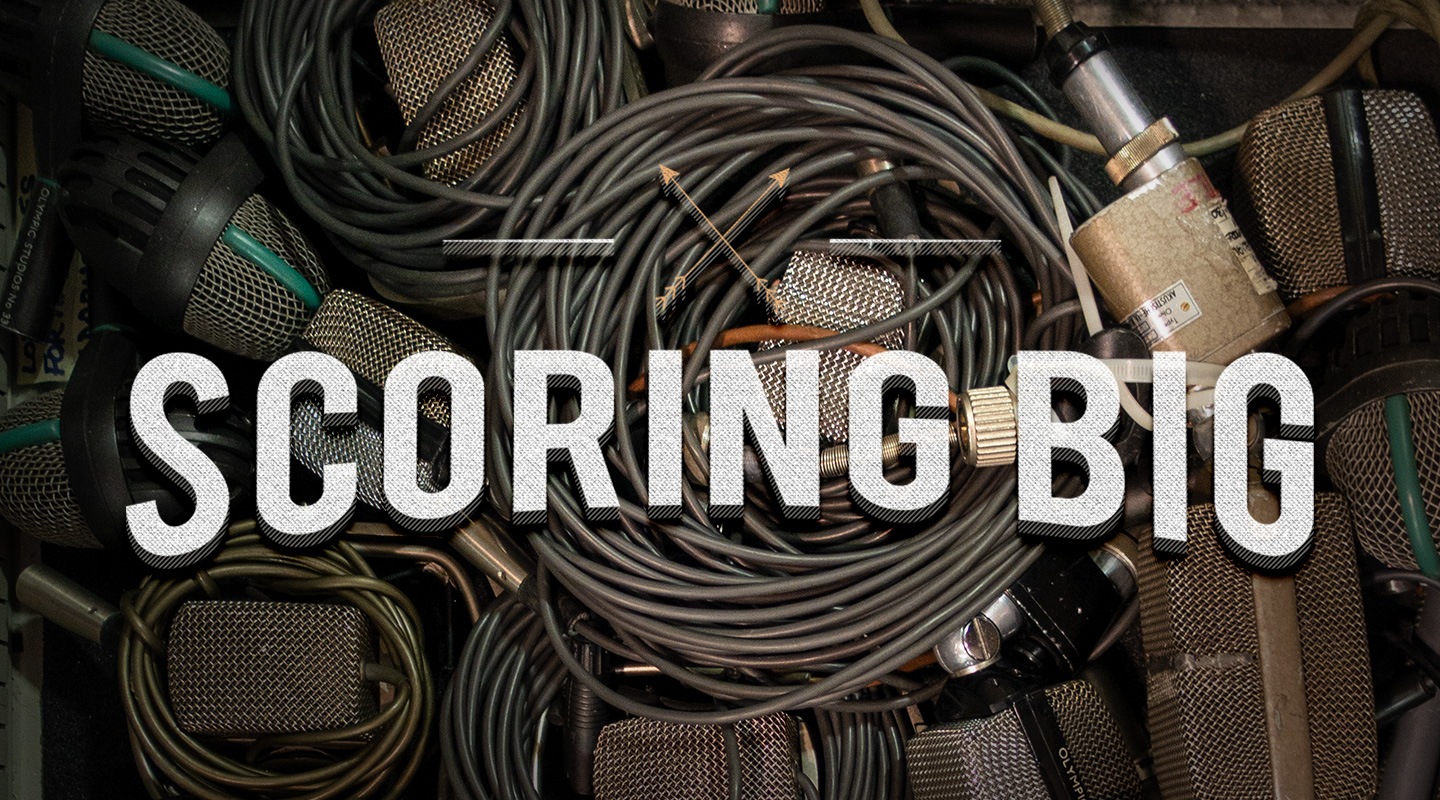
Scoring Big
Veteran scoring engineer Alan Meyerson is known for making Hollywood sound even bigger than it is. We shadow his process on two epic films: Jumanji: Welcome to the Jungle and Thor: Ragnarok.
Story & Photos: Ben Tolliday
Rifling through Alan Meyerson’s catalogue of engineering and mixing work takes a while. His oeuvre is packed tight like extras in a wartime epic, but where one dot on the battlefield happens to be the calibre of a Julia Roberts or Johnny Depp. Films like Inception, Interstellar, Wonder Woman and Dunkirk are just some of his score credits, thanks to his longstanding relationship with Hans Zimmer and composers like James Newton Howard and Danny Elfman.
He’s also mixed records for Bryan Ferry, New Order, and Etta James, which has afforded him a unique reputation in Hollywood as being the go-to guy if you want a tougher, more aggressive film score sound.
When Meyerson kindly agreed to take me under his wing as part of a Churchill Fellowship, it didn’t take long to experience the sheer magnitude of a Meyerson job. He invited me to observe orchestral sessions for two big budget Hollywood film scores: Jumanji: Welcome to the Jungle (composed by Henry Jackman) at the Barbra Streisand Scoring Stage, Sony Studios in Los Angeles. Then Thor: Ragnarok (composed by Mark Mothersbaugh) at Abbey Road Studio 1 in London.
Following these recording sessions, I shadowed Meyerson and assistant film score engineer Forest Christenson during mixing sessions at Remote Control Productions, Los Angeles. I was going to get the whole picture, all the way to the final act.
AN ARRAY OF MIC OPTIONS
The score for Jumanji: Welcome to the Jungle featured a full symphony orchestra, choir, piano, celeste, harp and extensive percussion overdubs with very little use of samples or synths. For maximum flexibility, Meyerson and Jackman decided to record the strings, brass and woodwinds together, then overdub keyboards, harp, choir and the percussion separately.
Meyerson’s main mic array consisted of a Decca Tree of Flea 50 omni mics, four Mojave MA-1000 midfield cardioid mics, and a pair of Sennheiser MKH800 omni outriggers to capture the wide ends of the ensemble. He had a pair of MKH800 omnis as side mics, another pair of MKH800 hypercardioids behind the conductor as the surround mics, plus two more wide-spaced pairs of MKH800 omnis at the front and rear of the ensemble as the height mics. The front pair of height mics were mounted behind the conductor, approximately 20 feet high, and the rear pair were at the opposite end of the room, behind the percussion section.
Above the woodwinds/choir, he placed three spaced Royer 122-V ribbon mics as LCR mid spots. Together, this main mic array captured the essence of the ensemble in the room, with closer detail captured by spot mics. Meyerson always recorded the main mic array — in addition to certain spot mics — for every recording pass. This kept each overdub sonically consistent, and meant he might capture anything from 22 mics for a harp overdub, right up to 69 mics per orchestra pass.

CLEAN & UNCOLOURED APPROACH
Before the musicians arrived on the morning of the first orchestra session, Meyerson had made educated guesses at the mic preamp levels, using his arsenal of Grace, Pueblo, Manley, Forssell and AEA preamps. As the players began their warmups, he quickly soloed each mic and fine-tuned preamp levels. Meyerson’s 30-plus years of experience was apparent in how fast he set an overall balance during the first take. All mics and outboard preamps on this session belonged to him, giving him an intimate understanding of their characteristics and parameters. He prefers preamps to be set up in the live room to avoid long cable runs between mic and preamp. Meyerson’s recording approach is simple: choose the appropriate mic, then capture as cleanly as possible through uncoloured preamps.
When tracking the orchestra, he used Bowers & Wilkins 802 D3 speakers as his LCR monitors, paired with the studio’s own surround monitors and subwoofer.
Henry Jackman and his team spent three and a half months composing the score for Jumanji, which fuses influences from Copland and Scriabin, plus a mix of African and Asian percussion styles. Jackman prefers the control room perspective during tracking, where he can control the pace of the session. His energy was quite remarkable. He’d often jog around the control room during a take, somehow listening closely whilst simultaneously having a conversation with his music department. His feedback was concise, yet he was very detail-oriented with phrasing, at times having the orchestra record numerous takes of a particular passage to achieve his desired outcome.
MONITORING THE MIXING PROCESS
The mix sessions for Jumanji required a lot of preparation, but Meyerson and Christenson show great synchronicity. Meyerson began mixing just a few days after the final recording session, while Christenson edited and prepped the remaining music cues, racing to keep a few cues ahead.
Meyerson’s 7.1 channel surround monitoring set-up includes ATC SCM100ASL Pro speakers (LCR), with left and right running via two Bowers & Wilkins active subwoofers with built-in crossovers, plus a pair of ATC HTS11 speakers (side channels), a pair of ATC SCM20PSL Pro speakers (surround channels), and a Kreisel DXD-12012 Duo subwoofer.
The mix rig comprises two Avid Pro Tools HDX systems connected via a Digital Audio Denmark MADI interface, clocking via an Antelope OCX-V, with the capacity to capture up to 128 channels in one pass. Meyerson’s control surface is the Avid S6.
Outboard hardware includes six Bricasti M7 reverbs, three Manley Massive Passive EQs, an EAR 825Q EQ, and a Manley Vari-Mu compressor.
Aside from this outboard gear, most of the mixing happens in Pro Tools. Meyerson owns just about every plug-in available, and he uses a wide range of them in his workflow.
He began by listening to the orchestra mics, balancing and panning the main array, then removing unnecessary mics and filtering low end rumble. He moves fast to create momentum, adding plug-ins and twisting virtual knobs in a stream-of-consciousness fashion.
I didn’t notice a formulaic approach — he would experiment with a variety of processing. For example, at times he used the Fab Filter Pro-Q 3 plug-in, yet other times he’d opt for the Massenburg MDW EQ to perform the exact same task. He’d alternate merely for the sake of tonal variation. Seeing as engineers have access to the same plug-ins, Meyerson places a higher value on creativity to execute sonic ideas.
Meyerson regularly compared his mixes with the composer’s reference mix so as not to lose sight of the composer’s intent and head out on a tangent. He’d also often check his work at a lowered volume, while cross-checking the reference mix.
ADDING CHARACTER
Generally, Meyerson would use auxiliary sends to reverbs and delays, blending the effects returns on auxiliary tracks. Sometimes he inserted the effect directly on a track or an instrument group’s auxiliary bus, adjusting the wet-dry balance to taste. On Jumanji, he inserted a D-spatial reverb plug-in directly on the aux of a snare drum overdub, spreading it around the surround image and pushing it deeper into the sound field.
Saturation plug-ins appeared frequently in the mix, adding grit and analogue flavour, and helping to shape tonality. For example, he would insert a Plugin Alliance Black Box Analog Design HG-2, plus a Fab Filter MB compressor to control the resulting resonant frequencies created by the saturation. Occasionally he would insert a saturation plug-in after a reverb, to darken its tone and sheen.
On a quiet cue, Meyerson employed a great technique to minimise low frequency rumble. Some engineers might use iZotope RX, and/or insert a high-pass EQ for the full duration of the cue. Instead, Alan automated a high-pass EQ for just the exposed start of the cue, leaving the full frequency range otherwise untouched.
Meyerson and Christenson created a tree-like structure for his VCA groups, starting with an ‘ALL’ VCA group, controlling the overall level of all musical elements. Next they branch out to VCA sub-groups: all orchestra, all choir, all percussion and all else. Below these were another set of sub-groups: live orchestra, sample orchestra, live choir, sample choir etc. At the bottom were VCAs controlling effects returns: all reverb returns, then sub-groups of the individual reverbs and other effects. These VCAs are organised so Meyerson can select any VCA group, and easily access all of its spill tracks via the Avid S6 control surface. This workflow is key, especially given the high track count. He made all of his volume automation moves using VCAs, greatly enhancing the dramatic impact.
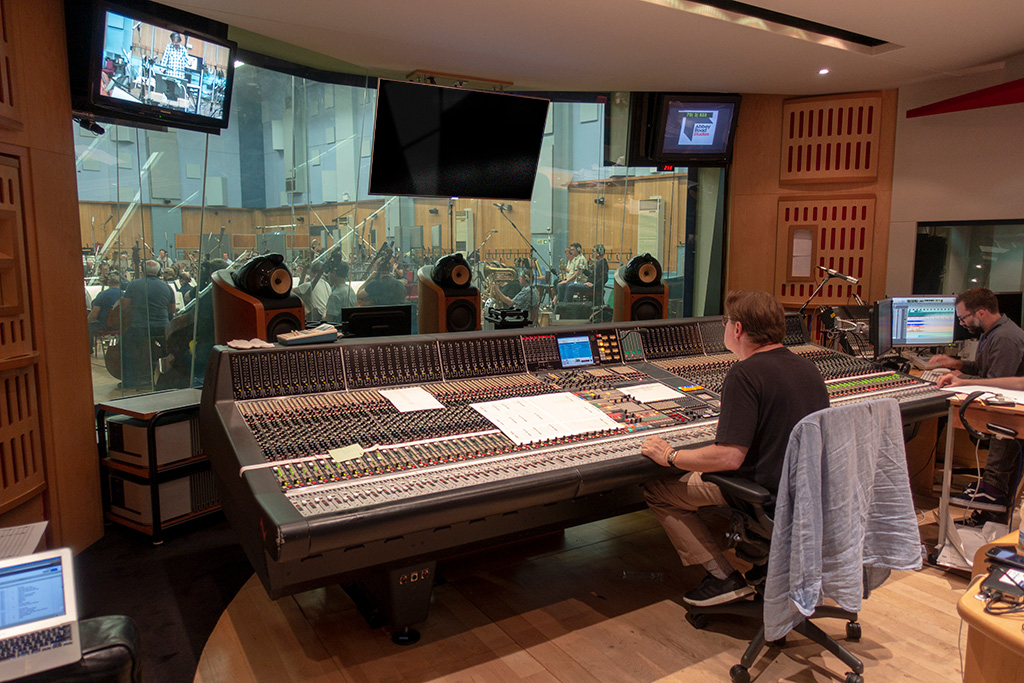
REVISION DECISIONS
When Meyerson was ready to present his work to Jackman, a playback review was scheduled. During the review, Jackman was active on the console, doing subtle, yet very musical volume rides. To accommodate this, separate VCAs were created, so Meyerson’s automation wouldn’t be over-written. This workflow could easily have gone awry, but Jackman and Meyerson are masters of their craft, and they’re quick to call each other out if a volume ride sounds forced.
Jackman’s mix revisions often called for subtle subtractive changes. For example, reducing a guitar level to serve the orchestra melody, or removing some 700Hz from the violin spot mics to create space for other parts. Meyerson’s goal when preparing for a playback review is to make each cue highly presentable, whilst leaving room for the composer’s revisions. Meyerson has learnt not to aim for perfection before the first playback review with a composer. Earlier in his career, he would get too emotionally invested in his mix balances. Taking it personally when revisions were inevitably requested by the composer.
At the end of the session, after the mixes were approved by the composer, Christenson printed the 25 stems for the dub stage, and 29 stems for the composer’s soundtrack mix. This process requires great attention to detail. On large-scale scores like Jumanji, having an assistant who can carefully execute this volume of work is essential.
HAMMERING OUT THOR
Thor: Ragnarok’s film score was composed by Mark Mothersbaugh, whose previous score credits include Wes Anderson’s Moonrise Kingdom, The Royal Tenenbaums and The Life Aquatic. Mothersbaugh was previously the co-founder, singer and keyboard player for Devo.
In Thor: Ragnarok, the protagonists travel between fictional planets Asgard and Sakaar, so orchestra and choir featured more prominently for the Asgard scenes, while electronic synthesiser elements were at the forefront for the Sakaar scenes.
Mothersbaugh and Meyerson chose to record orchestra and choir at Abbey Road Studio 1, London. The orchestra comprised 89 players, recorded live in a single pass on all but one of the cues.
ABBEY ROAD MIC COLLECTION
Abbey Road Studios has one of the world’s finest working collections of vintage microphones, maintained by microphone technician, Lester Smith. On set-up day, the jovial and eccentric Smith gave me a personal tour of his staggeringly impressive domain. There were 19 Coles 4038s, 18 Neumann U67s, 15 Neumann M50s, 13 Neumann U47s, and eight AKG C12… to name a few.
Meyerson’s main microphone array for Thor: Ragnarok included: a Decca Tree of Neumann M50s, four Neumann U67 ‘midfield’ cardioid mics, two wide-spaced Neumann M50 outriggers, two Brüel & Kjær 4006 side mics, two Sennheiser MKH800 hypercardioid surround mics, two more pairs of Brüel & Kjær 4006 height mics, and three Royer R121s as woodwind/choir LCR overheads.
For spot mics, Meyerson used: AKG C12s in cardioid (French horns), Neumann U47s and Sennheiser MKH800 Twin cardioids (double basses), Neumann U67 cardioids (celli), Coles 4038s (trumpets and trombones), a Neumann M49 (timpani), Schoeps CMC6 MK4s & MK21s (violins, percussion section and violas), Neumann KM84s (woodwinds), Neumann U87 cardioids (piano) and Brüel & Kjær 4011s (percussion).
For preamps, he used Neve AIR Montserrat preamps on the main array mics, remote-controlled via the Neve 88RS console. For all other spot mics, he used the built-in Neve preamps on the console.
The magnificent acoustic quality of Abbey Road Studio 1 was another x-factor. It was originally built for Sir Edward Elgar in 1931, with a 40ft ceiling height and 92ft by 52ft floor plan.

POSITIVE RECORDING PROCESS
The full orchestra was recorded in one pass, with harp set up in a separate isolation booth. Given this approach, balance and arrangement decisions were committed during recording.
The level of musicianship from the orchestra was fantastic, with many of the players either current or past members of the London Symphony Orchestra or London Philharmonic.
On day 2, I met associate principal violist Pete Lale, who has been a regular on London film score sessions for approximately 20 years. He mentioned how much the players appreciate some positive reinforcement from the control room first, before getting any constructive criticism. He said the musicians’ vibe sinks fast when all of the feedback is negative. Pete was very complimentary about the positive energy coming from the control room on these sessions. It was a great reminder that even the most experienced top-level session musicians are human. Respect, decency and positivity goes a long way towards getting the best out of the players.
LONDON VOICES
The choir was made up of 32 singers (12 gents and 20 ladies) from London Voices — the UK’s premiere choir for film score sessions. London Voices comprises a pool of professional singers, so the ensemble for a session can be tailored to the specific needs of any given project.
The main mic array captured most of the choir sound. The addition of three LCR Royer R121 mics, set above the gents in the back row, gave Meyerson flexibility to boost volume and presence of the tenors and basses in the mix.
Meyerson used a vintage AKG C12 cardioid mic for the solo soprano, set approximately three feet from the singer, with a Neve AIR Montserrat preamp, plus he captured the room sound with the main mic array. It was the only occasion I observed Meyerson using compression during recording — he ran the C12 through a Teletronix LA2A compressor.
MIXING TWO WORLDS
Compared to Jumanji, the list of stem deliverables for Thor: Ragnarok was quite compact, due to the orchestra mostly recording live without overdubs.
Also, Mothersbaugh didn’t request additional stems for a separate soundtrack mix. Because of that, Alan routed a folddown stereo mix through his analogue mastering chain — Manley Vari-Mu compressor and EAR 825Q EQ — printing stereo mixes for the soundtrack release, in addition to printing stems for the dub. His three Manley Massive Passive EQ units were inserted over the LCR and side channels of the main orchestra stem, for added warmth and sheen.
On the electronic music cues, Meyerson used modern approaches to classic 1980s pop mixing tricks. If a synth part or drums needed more weight, he might try duplicating the track, pitching it down an octave and blending it with the original. Alternatively, he might add subharmonic synthesis via Waves R-Bass or Refuse Lowender plug-ins.
When Mothersbaugh came in to review mixes, he was very happy with the results, and made just a few minor changes. With the first review completed, it meant Meyerson could confidently proceed onto the remaining cues with his mix aesthetic calibrated to Mothersbaugh’s taste.


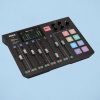

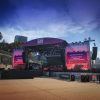







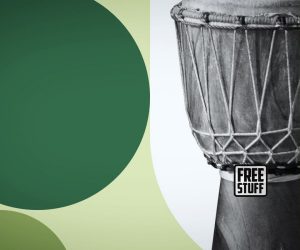
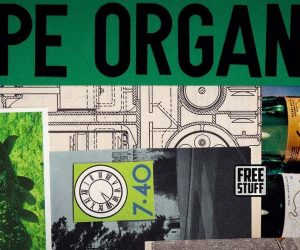






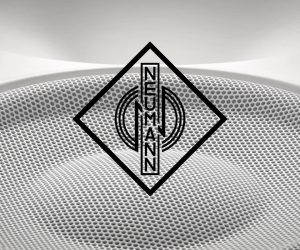



RESPONSES